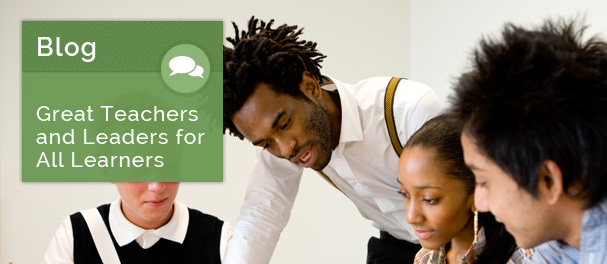Mirror, Mirror on the Wall: Providing Fair and Collaborative Support for New Teachers
Think back to your first work experience. Do you remember what it was like to be the “newbie”? What were you feeling the first time you walked into your new place of employment? With the numerous expectations from employers and co-workers, the first years of a new job are filled with highs and lows. Who did you turn to for support, guidance, and encouragement in those developing years?
Early supports can make or break a person’s career at a new organization. When new staff are left to "sink or swim," their effectiveness, morale, and commitment to the organization takes a hit. When this happens to staff in schools, the impact can be detrimental to student learning.
Now, imagine if your employer assigned you a support person. This support person would help you grow and develop your abilities in your new profession, bridging the gap between your college academics and helping you become an effective, accomplished professional. You could ask questions of this person, seek advice, or troubleshoot ideas.
This past September, I became this person for new teachers in the North Syracuse Central School District. I am a consultant teacher. My role can be thought of as an instructional coach or mentor, of sorts. For the first three years of their employ, I work with new teachers in our district with a collaborative focus on student achievement and success.
Establishing and understanding a framework for early teaching practice can anchor the success of a person’s career. Often, new teachers are left to “sink or swim,” and this hands-off approach can be detrimental to student success. In contrast, the consultant teacher provides the support, dialogue, and modeling needed by new teachers that will allow them to move from instructional content, process, and classroom management to the art of teaching.
As the teacher and I work together, we assess the teacher’s practice by analyzing evidence collected during formal and informal observations in the classroom. This evidence is simply a collection of what was seen and heard during the lesson. I see myself as a mirror, reflecting back only what image the teacher displays. Then I align the evidence to a rubric that is free from bias and judgment. We use the evidence to hone and sharpen the teacher’s practice. Each conversation centers on how each student was impacted by the lesson.
Here are some parts of our process. While working collaboratively, the consultant teacher and new teacher:
- Look critically at the teacher’s practice.
- Analyze evidence using the New York State Teacher Practice Rubric.
- Determine the teacher’s strengths and areas for growth.
- Establish the teacher's strategies to help reach the goal of better educating our students.
Then the consultant teacher passes the collected information to the district’s Peer Assistance and Review Panel. This panel reviews the information and makes annual employment recommendations to the district superintendent during the new teacher’s three-year probationary period.
When thinking about how consultant teacher positions, like mine, can be created or expanded, states and districts have many possibilities. Because consultant teachers might work in multiple buildings with different grade levels they are in the perfect position to perform other duties:
- Facilitating professional development workshops.
- Connecting teachers through the development of professional learning communities.
- Taking new teachers to observe other teaching practices.
- Researching and communicating best practices.
- Assisting in using data to reflect on teacher practice.
- Maintaining a consultant teacher website, housing articles, strategies, and lesson ideas.
Each of these strategies, along with regular classroom visits, can foster an environment in which a new teacher feels supported, connected, and effective.
As with any innovative practice, implementing a consultant teacher process is not without challenges. Engaging teachers in honest conversations about their practice is not always easy. Many new teachers are quick to defend their work and are not yet ready or secure enough in their practice to be reflective. These teachers may feel nervous or uncomfortable having someone in their classroom watching them teach.
Fortunately, fostering a trusting, collaborative relationship with a new teacher goes a long way in overcoming these challenges and nurturing growth in each teacher’s practice. Such support may prevent new-teacher turnover and stress and ensures a focus on excellence in every classroom for every student.
Now it’s your turn. We want to hear your thoughts:
- Have you tried promoting consultant teacher positions or similar ones in your state or district?
- What is the most important role for state education agencies in supporting and promoting consultant teachers for all classrooms?
- How can consultant teachers contribute to equitable access to effective teachers?



Add new comment